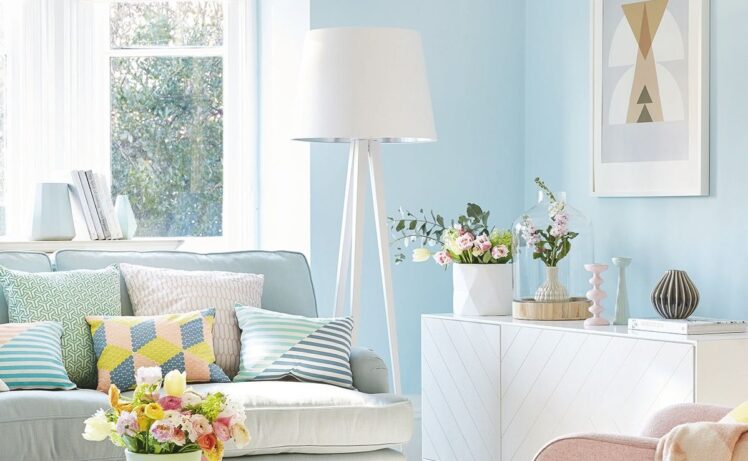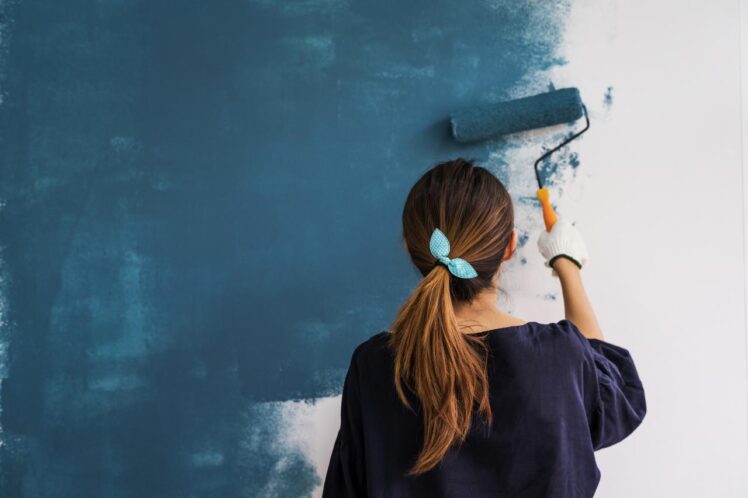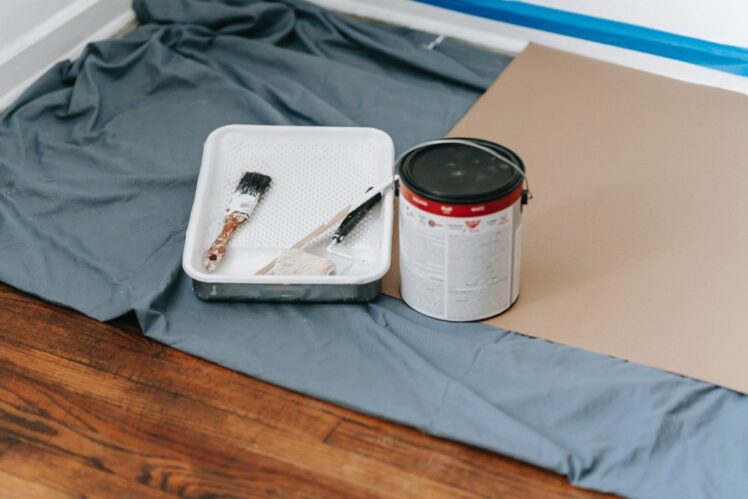4 Painting tips to Change the Look and Feel of a Room

Room makeovers can be intimidating, but they don’t have to be! Have you ever wanted to give your living room a fresh look without spending a fortune? Taking on the challenge of painting can easily transform the atmosphere of any room and break up the monotony. Today we are here to guide you through some simple and budget-friendly painting tips – let’s get started!
1. Preparing the Room for Painting
According to Absolute Home services, proper preparation of the surface and the space is key. The first step in a successful project is to thoroughly prepare the room for painting. To do this you will need to clear out all furniture and other objects as much as possible, as well as prepare the walls.
- Start by removing all items from the walls and ceiling, including pictures, posters and accessories such as coat hooks or curtain rods — any item that will obstruct your painting process should be removed.
- Once the room has been cleared of any items, you’ll want to wash off dirt and grime before applying paint — use a mild detergent-dampened cloth or sponge to do this. Be sure not to scrub too hard on glossy surfaces (which could abrade them) and dry afterward with an absorbent cloth or soft brush.
- Patch any holes or cracks that may be in your walls with spackle, using a putty knife to evenly spread it onto any areas of damage that need repair
- Once dried, sand down the area until it’s smooth.
- With these basic steps taken care of, you can now begin painting with confidence knowing your surface is properly prepared for the job ahead!
2. Choosing the Right Paint

Source: thespruce.com
It is important to consider the feel and look you are trying to achieve as well as the practical considerations that may go along with making a design choice. Selecting the type of paint can be a difficult decision, so it is important to know your options and how each might affect your overall design plan.
The most common types of paint are latex, acrylic, alkyd, or oil-based. Latex and acrylic are water-based formulations that work well in most environments when needing quick dry times, easy clean up and low odor. Alkyd or oil-based paints require more time for cleanup but provide a beautiful glossy finish that is easy to maintain. These types of paints are ideal for high traffic areas like hallways and entryways where scuffs and scratches can occur with frequent use or for surfaces where food preparation is expected like kitchen islands or cabinets.
In addition to selecting a type of paint, it’s also important to decide on the desired finish – flat look versus glossy finish – that fits within your design goals for the room. While flat finishes provide an even coating with little sheen, gloss finishes can be used to highlight architectural details such as molding or window trim and increase durability for surfaces exposed to wear through repeated use such as furniture or cabinets. Knowing which sheen best suits your needs can make all the difference in achieving a desired style in any room!
3. Tips for Painting a Room

Source: hgtv.com
Whether you’re looking to give your living room a quick refresh or to completely overhaul the look of your bedroom, painting is one of the fastest and most affordable ways to change the aesthetic of a room. As with anything you do yourself, however, it’s important to select quality supplies and take all safety precautions. To ensure a smooth and successful job, here are crucial steps to take before you break out the paint roller.
Surfaces: Before tackling any interior project, inspect all surfaces for imperfections such as peeling or cracks in drywall. If there is chipped or loose paint present, use a putty knife or fine-grit sandpaper to scrape it off and repair any existing holes with spackle. Wipe down walls thoroughly with a damp cloth or sponge so that there is no dust or debris present before priming.
Primer: Primer helps prepare the surface area for paint by adhering better than if you were just painting on bare substrate material such as drywall. It can also help reduce color variations from previous layers of paint and seal stains from water damage or smoke residue. Select an acrylic primer rather than an oil-based one for consistent results over time; its faster drying time will make it easier for you to begin painting more quickly after coating each wall with primer.
Painting Tools: Choose premium-quality brushes and rollers that won’t molt onto newly painted surfaces when used with latex; synthetic bristles are generally recommended for this type of usage because they don’t lose energy after multiple washings like natural bristles may do so . Also consider using stiff nylon roller covers along with trays specifically designed for rolling out evenly distributed coats of paint on your walls; using the right tools makes all the difference when creating even coverage without having everything seem streaky once finished.
4. Finishing Touches for a New Look

Source: redfin.com
Taking the extra step of adding finishing touches to your painting project can help transform a dull room into something exciting and inviting. After you finish the walls, try adding impactful accents to draw attention to certain areas of the room. With minimal effort, you can create a unique style that reflects your personality.
Selecting one wall in the room for special treatment will instantly draw the eye’s focus. This can be done simply by choosing a different color than that of the other walls or by incorporating patterns or textures. Wallpaper panels in coordinating colors, stenciling with bold designs or even hanging artwork across the entire wall are all options you can explore for adding dimension and style.
Small changes within each room can make a big difference in how much you enjoy coming home every day – don’t forget those extra finishing touches!
Conclusion
When it comes to truly updating the look and feel of a room, painting can make all the difference. Whether the aim is to brighten or subdue a space, create contrast or draw focus, it’s possible to achieve a successful and satisfying outcome with careful research and preparation.
Simply collecting inspiration and establishing a color palette are just early stages in this creative process. Consideration of quality materials, proper brushwork techniques and personal preferences can help ensure an aesthetically pleasing final result. Then, through thoughtful application of colors and patterns, you’re bound to create a beautiful space that feels comfortable and inviting.





